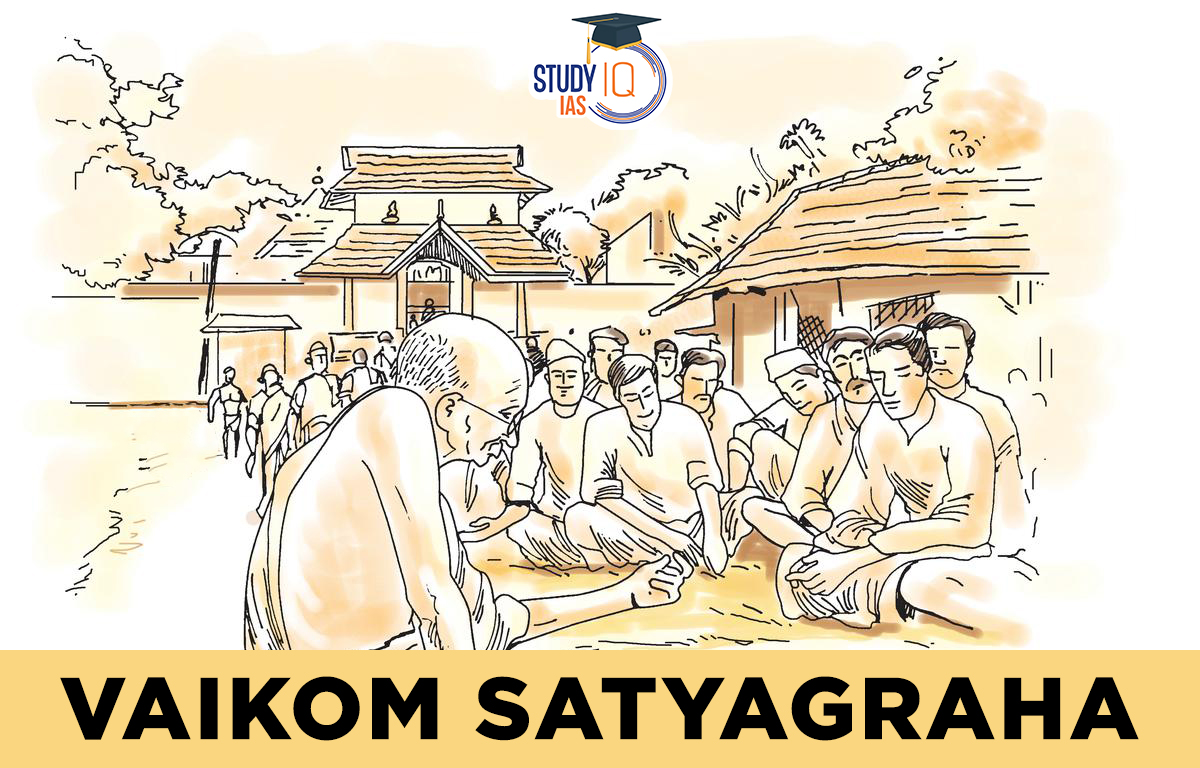Table of Contents
Context: This year commemorates the centenary of the Vaikom Satyagraha, a landmark event in the history of social reform movements in India that began on March 30, 1924.
Vaikom Satyagraha
- The Vaikom Satyagraha, initiated on March 30, 1924, in the temple town of Vaikom, within the princely state of Travancore (Kerala), stands as a pivotal moment in the history of social reform movements in India.
- It represented the early use of Gandhian methods of protest in Travancore, targeting the rigid caste-based restrictions prevalent at the time.
- This non-violent agitation, focusing on temple entry rights for lower castes, marked the beginning of a series of temple entry movements across the country.
Background of Vaikom Satyagraha
- Travancore’s Social Climate: Described by An Ayyappan as feudal and custom-ridden, with strict caste-based restrictions on temple entry and even the use of public roads by lower castes.
- 19th Century Reforms: Under Maharaja Ayilyam Thirunal Rama Varma, significant reforms such as universal free primary education were introduced, benefiting lower castes.
- Emergence of Educated Elites: By the early 20th century, an educated elite among various communities, including the Ezhavas, began to challenge the status quo, although substantial barriers remained, particularly in government employment.
Road to Agitation for Satyagraha
- Initial Advocacy: T K Madhavan, an Ezhava leader, advocated for temple entry rights as early as 1917 and, inspired by Gandhi’s Non-Cooperation Movement, sought direct action by 1920.
- Indian National Congress Support: The involvement of the INC, following a resolution in the 1923 Kakinada session, brought national attention to the cause.
- Selection of Vaikom: The town was chosen for the satyagraha due to its significant Shiva temple, symbolising the broader fight against untouchability.
100 Years of The Vaikom Satyagraha
- Strategic Focus: Initially, the movement aimed to open the roads around the Vaikom temple to all castes, rather than the temple itself.
- Public Mobilisation: Starting on March 30, 1924, protesters, including individuals from various castes, attempted to use restricted roads, leading to arrests and a continuous cycle of protest and police action.
- Barricades and Peaceful Protest: From April 10, protesters faced barricades and resorted to fasting and singing patriotic songs in peaceful defiance.
- Support and Counter-Agitations: Notable figures like Periyar and C Rajagopalachari supported the movement, which faced significant opposition and violence from upper-caste groups.
We’re now on WhatsApp. Click to Join
Legacy and Aftermath
- Compromise and Disappointment: In March 1925, a compromise was reached to open three out of the four roads around the temple. However, this outcome was seen as insufficient by many, including Periyar, who had expected more radical changes.
- Temple Entry Proclamation: The movement set the stage for the 1936 Temple Entry Proclamation by the Maharaja of Travancore, allowing marginalised castes into state temples.
- Impact on Indian Politics: The Vaikom Satyagraha demonstrated the effectiveness of non-violent protest and civil disobedience in India, contributing to the national freedom movement and the fight against caste discrimination.


 Places in News for UPSC 2025 for Prelims...
Places in News for UPSC 2025 for Prelims...
 New Phase of Operation Chakra to Combat ...
New Phase of Operation Chakra to Combat ...
 Soyuz Aircraft: History, Design and Sign...
Soyuz Aircraft: History, Design and Sign...





















